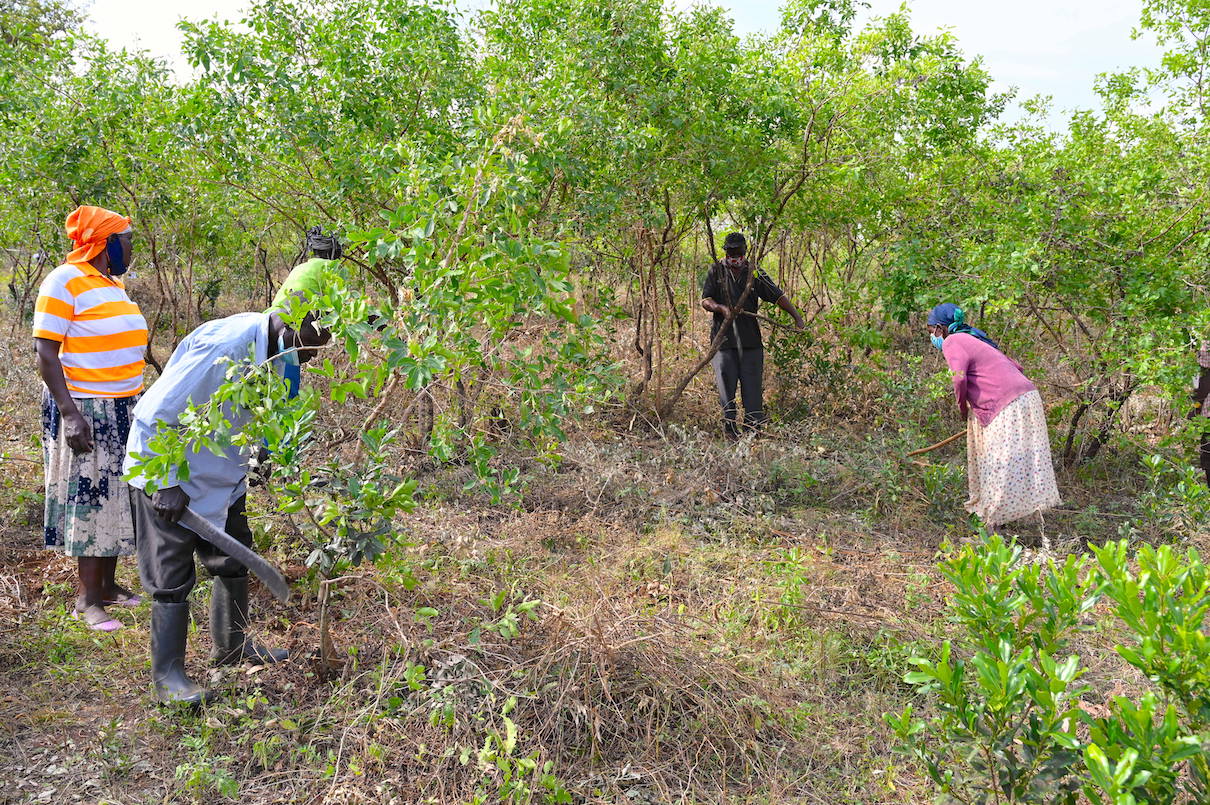Forest restoration initiatives shield communities against the harrowing effects of floods
By Irene Sinoya,World Vision Communications Specialist,Kenya
Fourty-four year-old Pamela is among the many residents of Nyatike who previously suffered from the adverse effects of floods in Kenya’s Migori County.
The seasonal floods, which would wreak havoc in her village, were attributed to human deforestation activities that had a detrimental impact on the region’s environment.
People used to cut trees for charcoal burning and selling so as to earn a living. Yet, they were oblivious of the long-term effects of this activity.
The mass destruction of trees made the Mirema forest in Nyatike ‘disappear’ at an alarming rate, leaving the land bare and dry over the years.
This led to changing weather patterns in the area. Residents started experiencing long seasons of drought and short seasons of rainfall that were accompanied by devastating floods due to the bare land - devoid of trees and other vegetation.
Whenever floods struck, Pamela and thousands of people would be displaced and their properties destroyed. Her home often got submerged in water, forcing her to flee with her family for safety.
Her school going children, Clinton age nine, and Lilian age six were equally affected. Clinton was often forced to wade through the knee-high waters to get to school whereas Lilian - the younger child - would opt to skip school for fear of being carried away by the floods.
Being a widow and a smallholder farmer, Pamela notes that she would suffer huge setbacks during rainy seasons as a result of the floods.
“My husband who was the breadwinner in my family died in 2008, leaving me with five children. Each year, we would be displaced by floods, which made life difficult. The crops I used to grow on my small piece of land always got destroyed - either by floods or drought. As a result, providing for my family became a burden,” says Pamela.
Tides began changing for her and her community, when World Vision started promoting afforestation initiatives through its Regreening Africa project that is funded by the European Union.
The organisation is implementing the project in collaboration with ICRAF and the County Government of Migori.
“The project enlightened us on the importance of environmental conservation. We learnt that trees play a key role in preventing rain water runoff which causes floods. The sensitisation made us see the connection between our destructive environmental practices and the floods problems that had been affecting us for many years,” notes Pamela.
This epiphany inspired Pamela to become an environmental conservation champion and advocate for the formation of the Mirema Forest Association which has been spearheading effective tree planting, revival and management approaches with the aim of restoring the forest.
“When I was a little girl, the Mirema forest was fully packed with indigenous trees and many were used for medicinal purposes. We would also graze our cattle in the forest because it was full of lush grass and other vegetation that the livestock enjoyed. Unfortunately, when people started burning charcoal, all the trees were depleted. That marked the beginning of our suffering,” recalls Pamela sadly.
To revive these valuable indigenous trees, Pamela and other community members are using a low-cost tree growth and management technique known as the Farmer Managed Natural Regeneration (FMNR) approach that World Vision has been promoting in the area.
“This allows us to use naturally occurring tree seeds in the soil, as well as tree stumps which we manage effectively through pruning and protection from destructive animals so as to promote the regrowth of the indigenous trees,” she says.

Aside from the FMNR approach, the Mirema Forest Association members are also practicing an afforestation technique known as establishment planting.
“This refers to the introduction on new valuable tree species to our Mirema forest. We are doing this through tree seedlings that World Vision and ICRAF have supported us to acquire,” she notes.
According to Pamela, planting trees was the only way they could save the community from the harrowing effects of floods.
Their efforts eventually paid off. In about four years, Pamela and her dedicated community members were able to ‘fill’ the bare forest land with indigenous trees as well as other new varieties of tree species.
The impact achieved is a site to behold! About 50 percent of the forest land, which was initially bare and dry, is currently covered with beautiful trees and green vegetation.

The proportion of the Mirema forest that has been restored is now a natural habitat for many species of birds and animals.
In addition, the area surrounding the restored part of the forest, which encompasses Pamela’s village, now receives adequate rainfall quantities due to the increased tree cover.
Most importantly, the residents are no longer affected by floods. Indeed, no cases were recorded in the past rainy season.
“The results have really motivated us. We will not get tired. The work will continue until we restore the entire forest so that many more people can reap the benefits from the increased tree cover and be protected from floods in Nyatike,” she states.
Aside from the forest restoration work, Pamela has also planted numerous tree varieties at her home.
Together with other community members that she empowered, Pamela has a tree nursery with over 55,000 seedlings of different high-value tree species (such as acacia, sesban, calliandra, casuarina, leucaena, moringa and grevillea) that they sell to promote afforestation and generate income.
Pamela notes that tree planting has enabled her to get back on her feet and sustain her family.
Despite being a widow, she is now able to provide basic needs for her children and also pay their school fees.
“Since my mother started planting trees, we have never lacked food in our family. She sells trees to people and uses the money to buy for us books, shoes and school uniform. These days, other children at school no longer laugh at us because now we don’t walk barefoot like before,” says Clinton, Pamela’s son.
In addition, Pamela has fruit trees such as mango and pawpaw that have helped to boost the nutrition status and health of her family. She also has ornamental trees that make her home look beautiful. This attracts more people who end up buying the seedlings for landscaping or beautifying their homes.
“I also sell the fruits to get additional income which makes me happy. I have seen first-hand the value of trees in my life. So, I would like to encourage other people to take up tree planting and know that they can benefit a lot from conserving trees.”